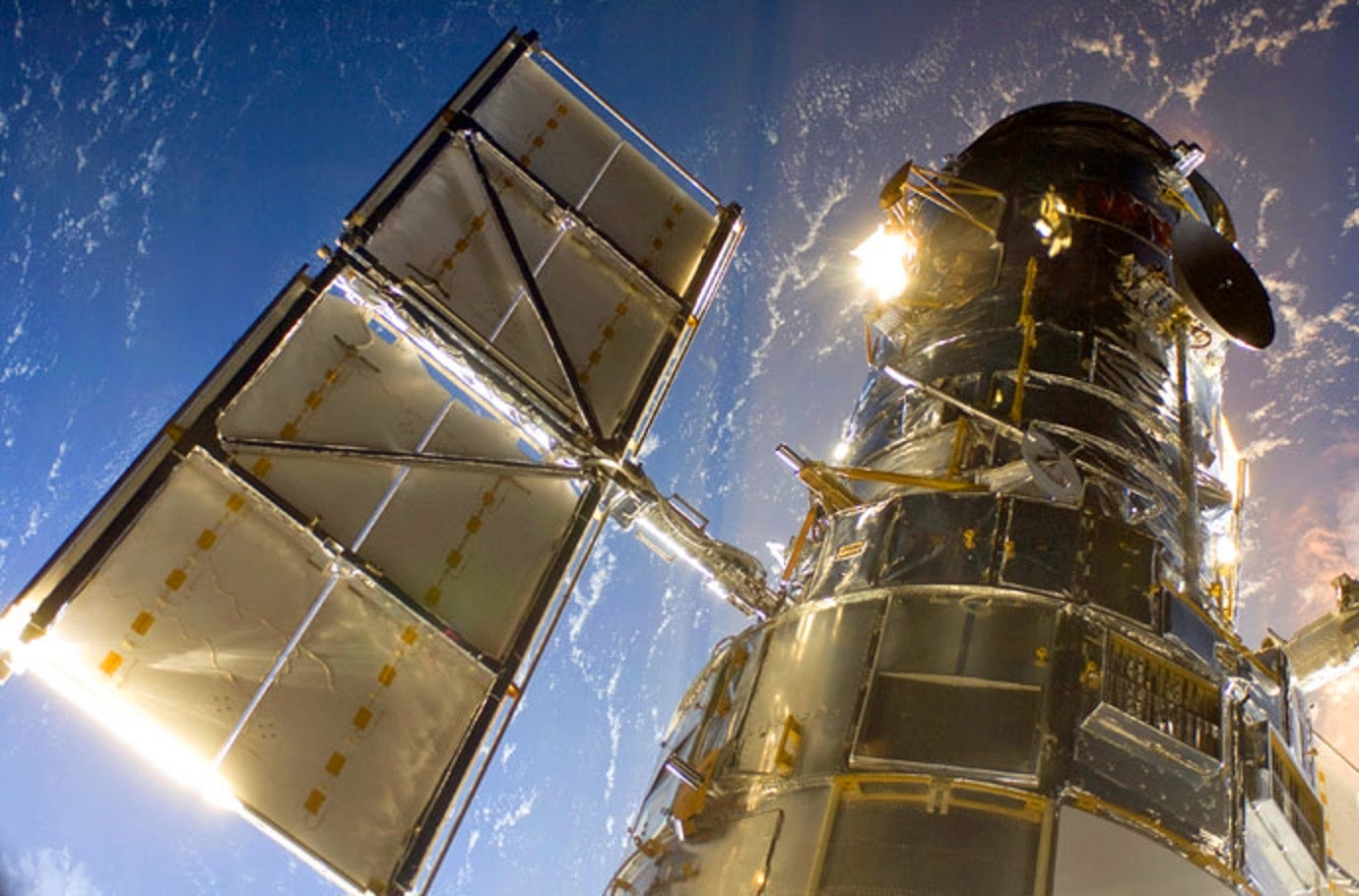Image from
hubblesite.org
Srikandi גבורה - Diiktiraf sebagai "gambar
yang paling komprehensif pernah dihim-punkan alam semesta yang sentiasa berubah,
"imej terkini ditangkap oleh Teleskop Angkasa Hubble adalah cetusan warna
yang menggambarkan beratus-ratus galaksi di alam semesta.
Dikeluarkan pada hari Selasa,
imej yang indah adalah sebahagian daripada kajian meneroka ‘Hubble Ultra Deep
Field’ - sebahagian daripada ruang buruj Fornax bahawa ahli-ahli astronomi
telah menyusun lebih daripada 10 tahun - dan mempunyai kira-kira 10,000
galaksi.
Walaupun imej sebelumnya Hubble
Ultra Deep Field (HUDF) dapat menangkap gelom-bang cahaya dalam spektrum yang
boleh dilihat dan berhampiran inframerah untuk ultraungu ini, imej-imej
daripada spektrum hampir ultraungu telah nyata kurang.
Seperti yang dinyatakan oleh
Agensi Angkasa Eropah dalam satu kenyataan akhbar, ahli-ahli astronomi dapat
menambah imej hampir ultraungu dengan penggunaan Hubble Wide Field Camera 3,
menyebabkan potret yang menunjukkan lebih daripada sebelum ini.
"Kekurangan maklumat
daripada cahaya ultraungu dibuat belajar galaksi dalam HUDF seperti cuba untuk
memahami sejarah keluarga tanpa mengetahui tentang gred-sekolah kanak-kanak,"
kata Caltech Harry Teplitz, penyiasat utama bagi projek yang dikenali sebagai Liputan
Ultraviolet Medan Dalam Ultra Hubble ‘Ultraviolet Coverage of the Hubble Ultra
Deep Field’, menurut NBC News.
Peliknya, galaksi-galaksi yang
terkandung dalam imej menghulurkan kembali sepanjang jalan ke "dalam
beberapa ratus juta tahun" daripada Big Bang. Gambar itu sendiri telah
dibina menggunakan 841 orbit Hubble antara tahun 2003 dan 2012.
The
Hubble Space Telescope (AFP/NASA)
"Galaksi-galaksi yang
menunjukkan setiap bentuk mungkin dan saiz," tulis ahli astro-nomi Phil
Lhoba di Slate. "banyak yang diputarbelitkan, mangsa perlanggaran dengan
galaksi lain, graviti menarik bersama mereka ke dalam bentuk yang pelik seperti
gula-gula quadrillions kilometer di seluruhnya.
Banyak yang sangat kebiruan,
menunjukkan pembentukan bintang aktif, manakala yang lain adalah sangat kemerahan,
mungkin galaksi banyak yg lebih jauh, mengambil cahaya mereka jauh lebih lama
untuk sampai kepada kita. Perhatikan baha-wa keban-yakan galaksi sangat merah
adalah titik yang lebih kecil, satu lagi petunjuk jarak besar mereka."
Lhoba menambah bahawa imej ini
sahaja boleh mengambil ahli-ahli sains bertahun-tahun, mungkin dekad, untuk
mengkaji - mudah-mudahan mendedahkannya bagai-mana galaksi kecil mula terbentuk
- tetapi menambah bahawa walaupun begitu kesan HUDF yang mungkin berakhir
menjadi pada orang awam.
"Melihat kepada kecantikan
itu dan untuk melihat bagaimana luas Universe kita, berapa dalam ianya itu,
bagaimana kompleks, dan bagaimana yang menakjubkan, dan belum tahu bahawa kita
boleh melihatnya, kita boleh belajar, dan, melalui sains, kita dapat memahami
ianya . . . yang belum boleh membuktikan untuk menjadi pengaruh yang paling
mendalam Hubble akan mempunyai sejarah."
Hubble
telescope captures 10,000 galaxies
in one amazing shot . . .
Billed
as “the most comprehensive picture ever assembled of the evolving universe,”
the latest image captured by the Hubble Space Telescope is an explosion of
color that depicts thousands of galaxies in the universe.
Released
on Tuesday, the beautiful image is part of a survey exploring the Hubble Ultra
Deep Field – a portion of space in the constellation Fornax that astronomers
have been compiling for more than 10 years – and features approximately 10,000
galaxies.
While
previous images of the Hubble Ultra Deep Field (HUDF) were able to capture
wavelengths of light in the visible and near-infrared spectrum to the far
ultraviolet, images from the near-ultraviolet spectrum were noticeably lacking.
As
noted by the European Space Agency in a press release, astronomers were able to
add the near-ultraviolet images with the use of Hubble’s Wide Field Camera 3,
resulting in a portrait that shows far more than ever before.
"The
lack of information from ultraviolet light made studying galaxies in the HUDF
like trying to understand the history of families without knowing about the
grade-school children," said Caltech's Harry Teplitz, principal
investigator for a project called Ultraviolet
Coverage of the Hubble Ultra Deep Field, according to NBC News.
Amazingly,
the galaxies contained within the image stretch back all the way to “within a
few hundred million years” of the Big Bang. The photo itself was constructed
using 841 Hubble orbits between 2003 and 2012.
"The
galaxies show every possible shape and size,” wrote astronomer Phil Plait at
Slate. "Many are distorted, victims of collisions with other galaxies,
their mutual gravity pulling them into weird shapes like taffy quadrillions of
kilometers across.
Many
are very blue, showing active star formation, while others are exceedingly red,
probably galaxies much farther away, their light taking far longer to reach us.
Note that most of the very red galaxies are smaller dots, another indication of
their tremendous distance."
Plait
added that this image alone could take scientists years, perhaps decades, to
study – hopefully revealing how small galaxies began to form – but added that
even then, the HUDF’s most powerful impact may end up being on the general
public.
“To
look upon such beauty and to see how vast our Universe is, how deep it is, how
complex, and how spectacular, and yet to know that we can see it, we can study
it, and, through science, we can understand it … that may yet prove to be the
most profound influence Hubble will have on history.”
READ
MORE: http://on.rt.com/7v6ywu


No comments:
Post a Comment